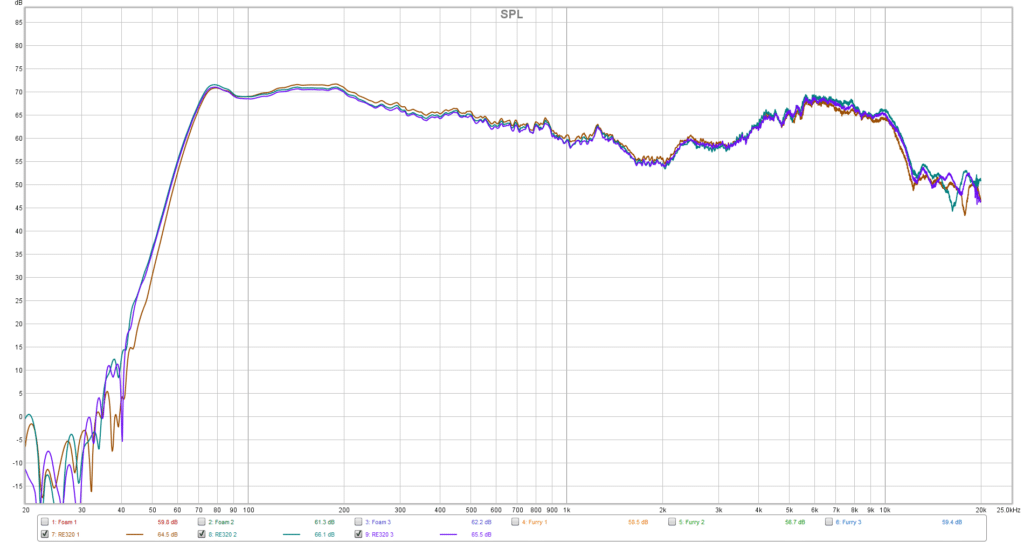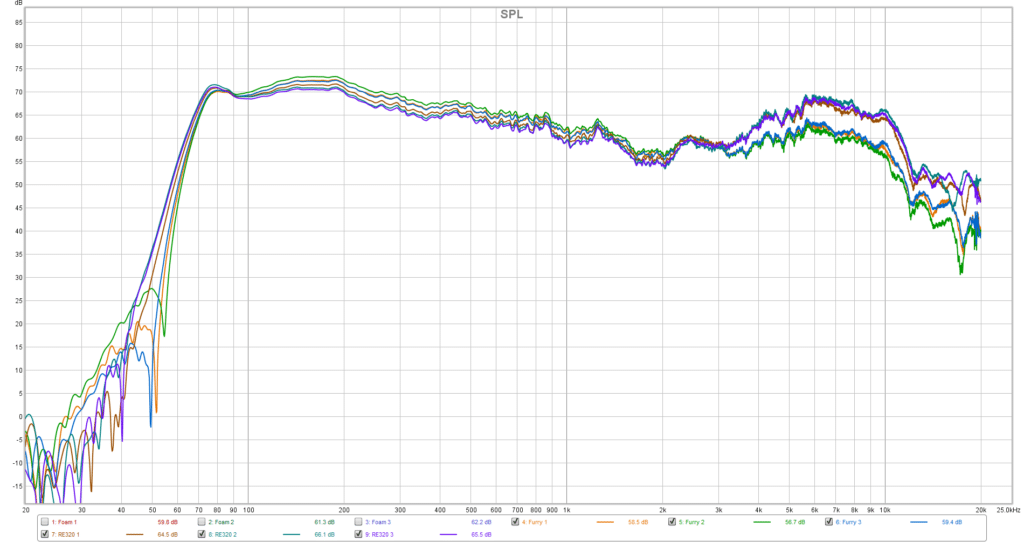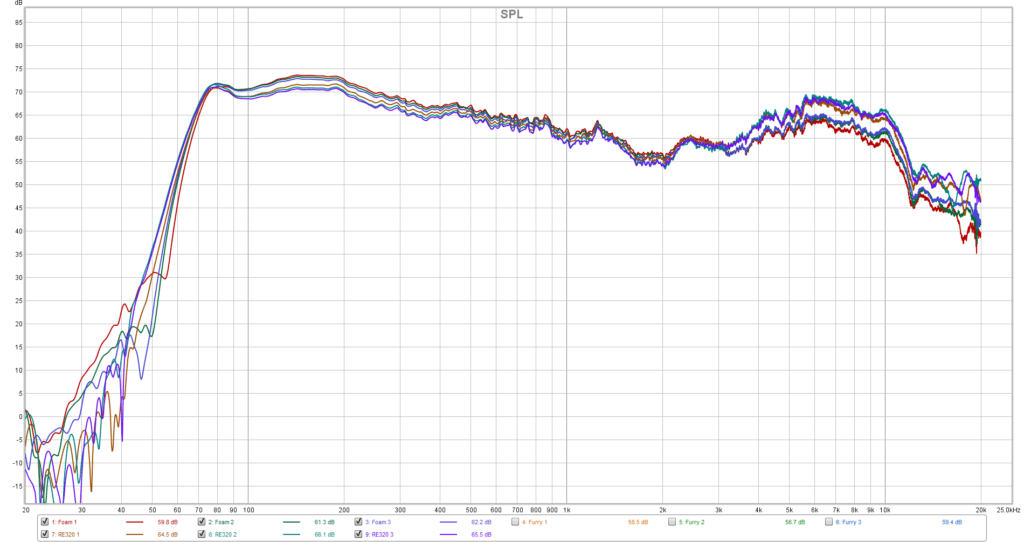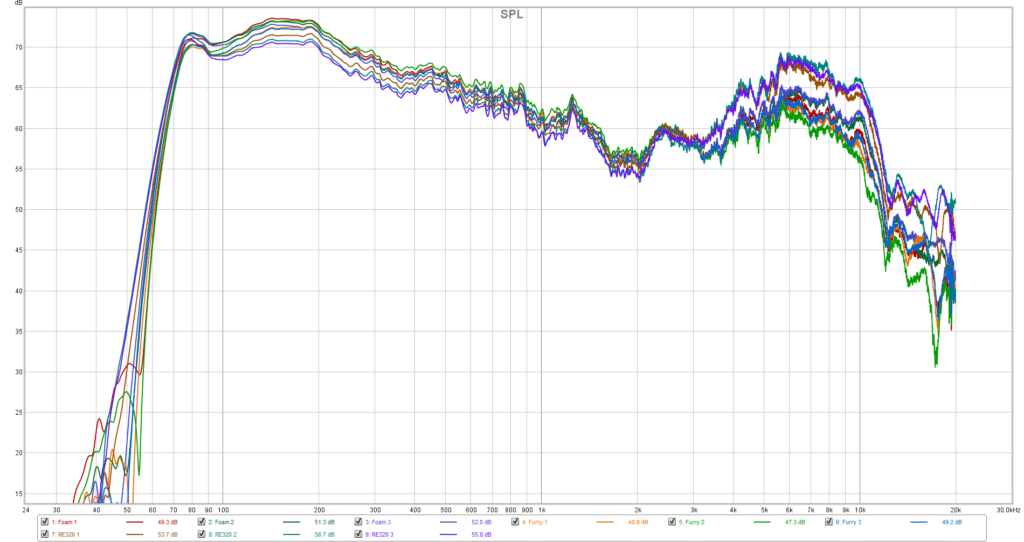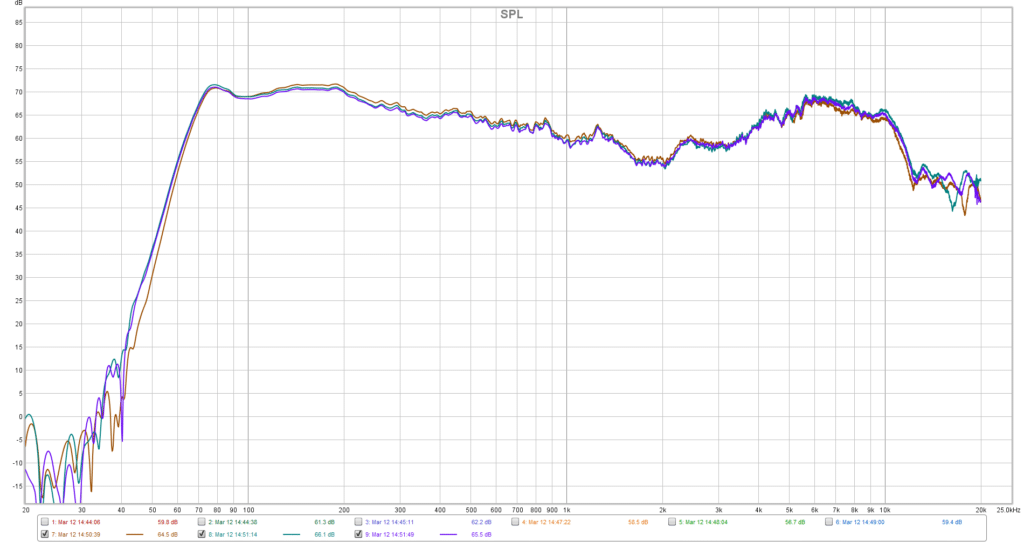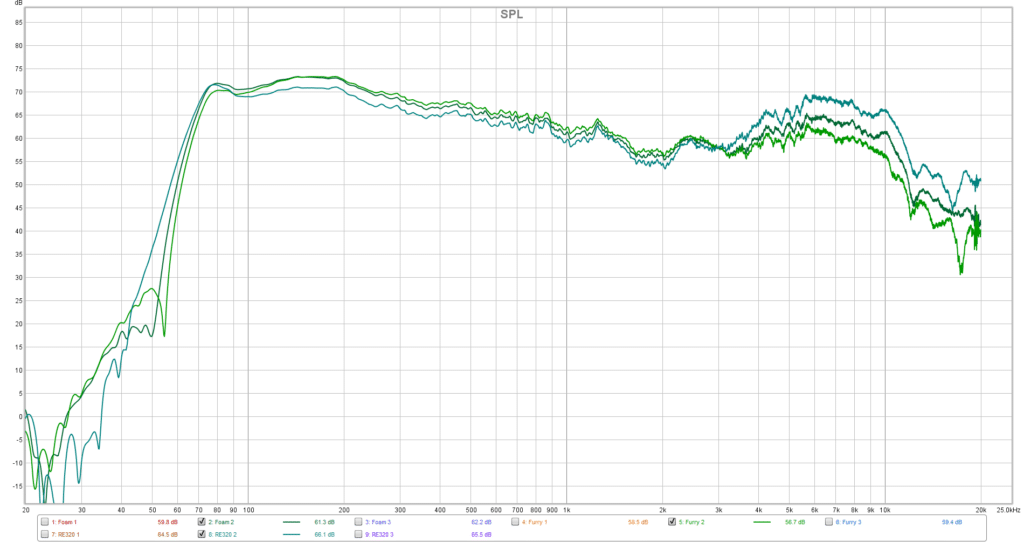As an Amazon Associate DcSoundOp earns from qualifying purchases.
Pop-filter, Windscreen, Windjammer or nothing?
Ever wonder what adding a windscreen does to the sound of your mics? It would make sense that anything you put between a microphone and the source will alter the sound, right? But how much are we talking? You’d think that windscreens especially would be as transparent as possible acoustically, but are they all created equal? Do we need to be testing each windscreen to see what they’re actually changing? If you do, then you can think about using those changes to your advantage to solve problems.
The RE320 we recently picked up for the channel has a really nice factory windscreen option you can purchase separately, but some people online say it kills the sound. Reading into the negative reviews and complaints, it seems that they just didn’t expect putting a big lump of foam in front of a mic would have any effect. There are tons of different styles and types of windscreens and pop-filters out there, but it seems like very little thought goes into some people’s choices when they go shopping for one.
Not only do different windscreens and filters affect the response of the mic, but they also perform different from one another at various jobs. From taming plosives to cutting down wind gusts outdoors, you’ll want the tool that was actually designed for the job you’re trying to do. While some folks online clearly see a twenty dollar foam windscreen as pricey for a ball of foam, that’s really on the very budget end of wind blocking technology. Location sound crews use far more expensive setups from the likes of Rycote to do the job. They often need to keep wind, rain, ice and snow from ruining their recordings.
Download the .WAV files to listen closely and compare the measurements in full screen
Audio Examples
To download the following files, right click –> ‘save audio as’ should get it done.
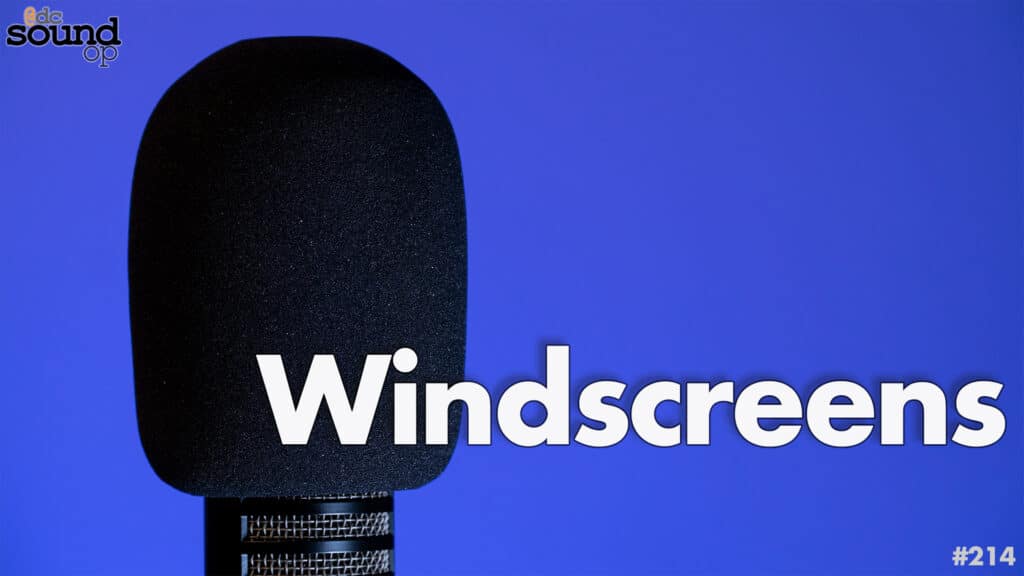
Amazon and the Amazon logo are trademarks of Amazon.com, Inc, or its affiliates.

